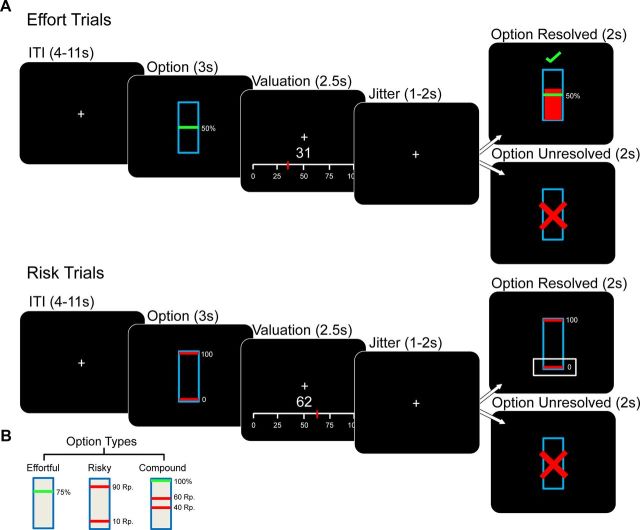Figure 1.
Experimental design. A, Task. Participants first viewed a fixation cross for a variable ITI of 4–11 s. At the end of the ITI, an option was presented for 3 s. After option presentation, participants were required to value the option by moving a red cursor along a scale to enter a bid. The current bid (based on the position of the cursor) was presented in text above the scale. Participants held the cursor at their desired bid. This valuation phase lasted 2.5 s and measured willingness to pay for every option type. After a random jitter of 1–2 s, the outcome phase was displayed for 2 s. If the bid was above a randomly drawn number, the option was resolved and executed for the participant to gain monetary reward. B, Examples of stimuli corresponding to different option types. Options were represented as a blue rectangle and could be divided into three basic subtypes. For effortful options, the required amount of physical effort was denoted by the height of a green bar (5 levels). Risky trial types were denoted by two red bars, the distance between which denoted the SD (i.e., risk) of the binary lottery (5 levels). Compound options contained risky (red bars) and effortful (green bars) elements, following the same convention as isolated effort and risk trials.

